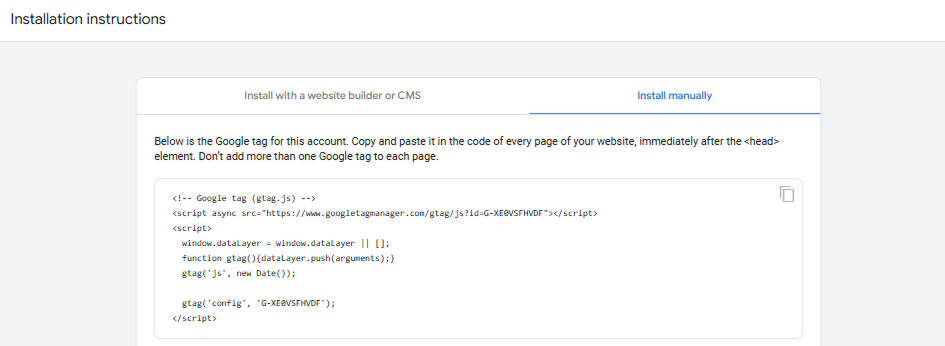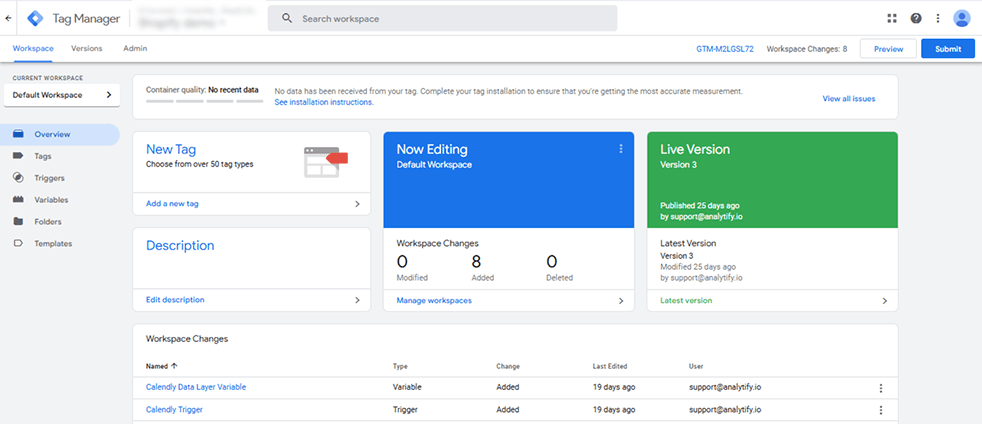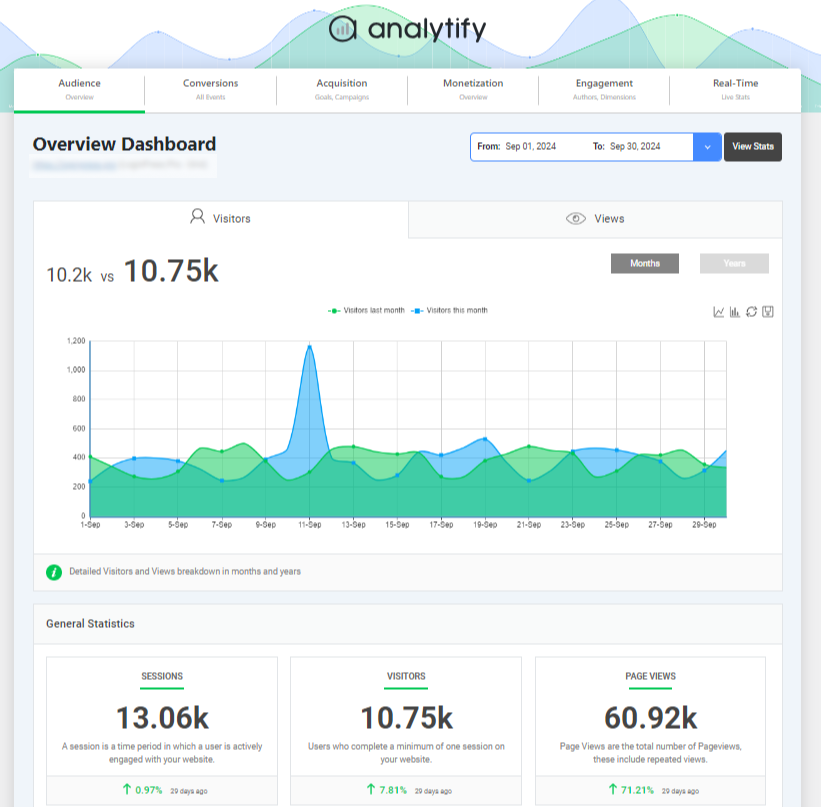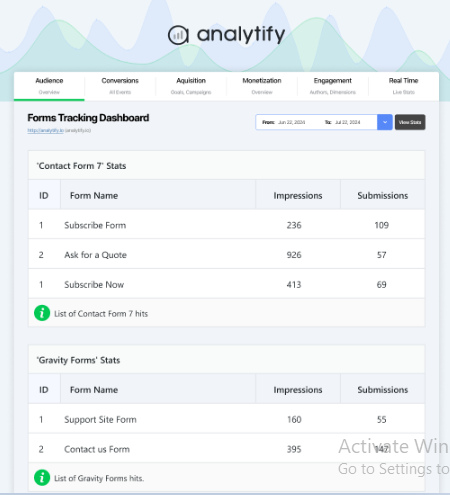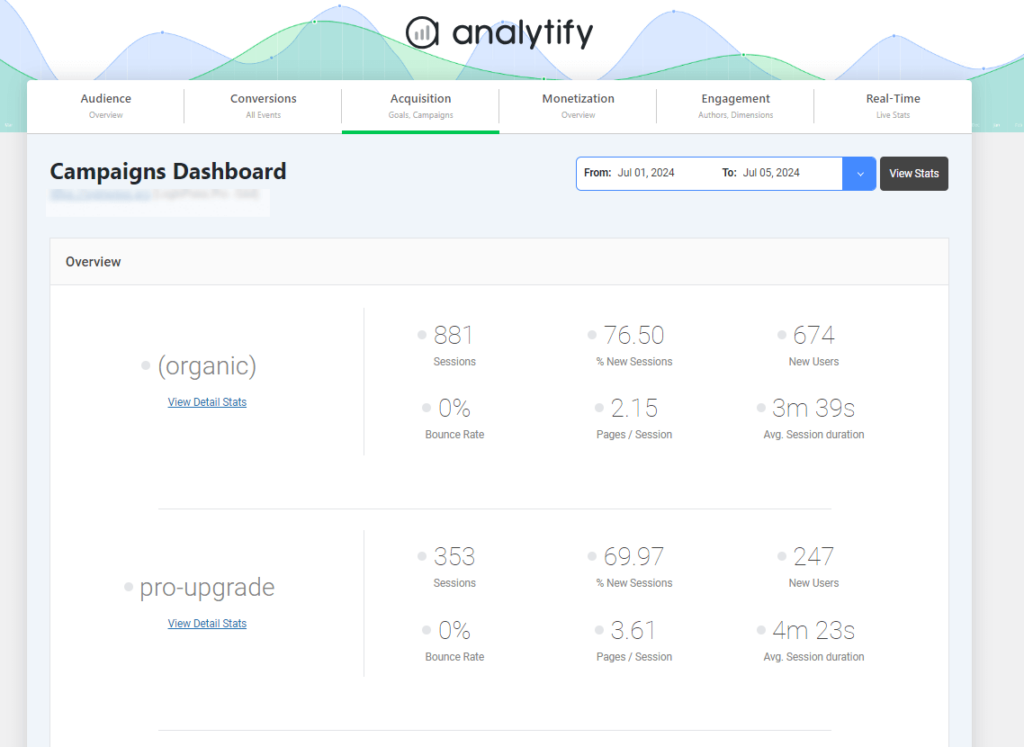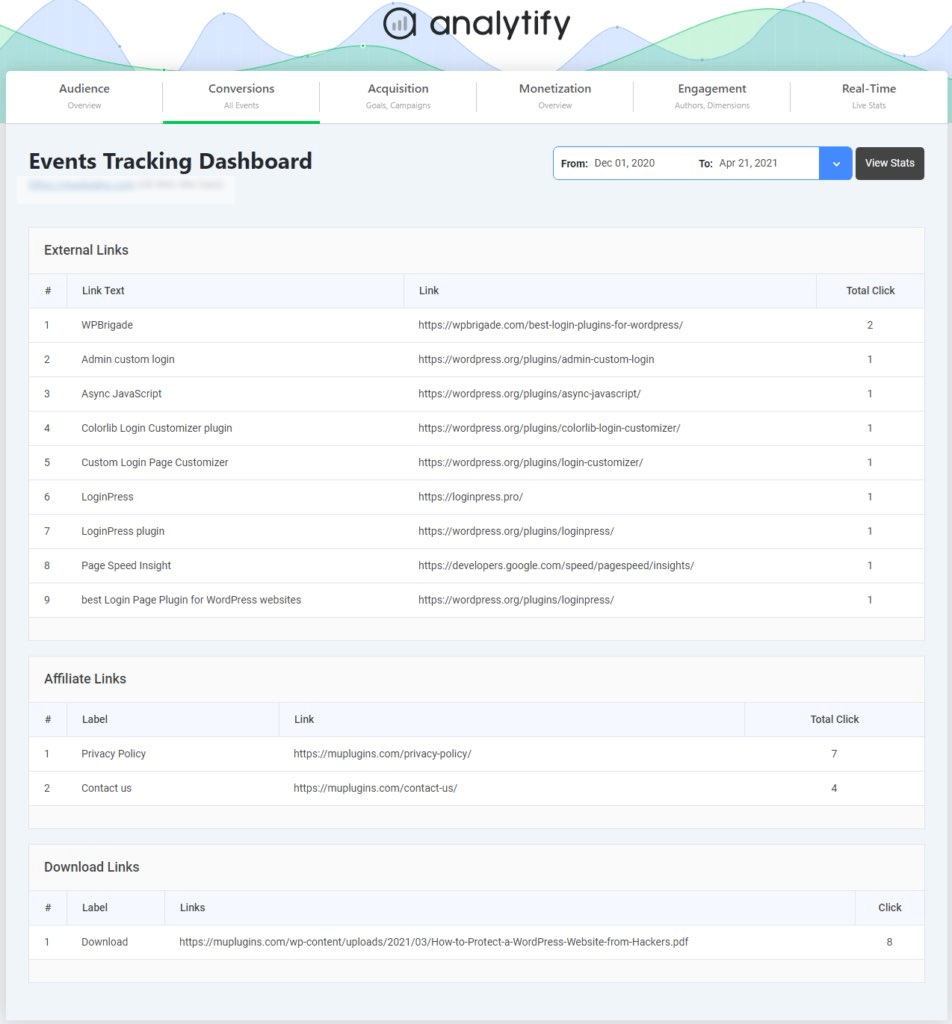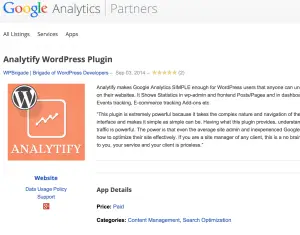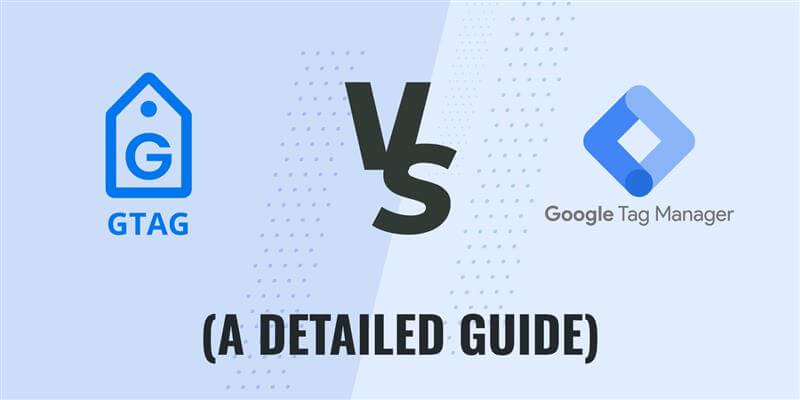
GTAG vs Google Tag Manager (Detailed Guide)
Are you confused about whether to use GTag or GTM to track analytics on your website? Both tools are designed by Google and are used to track user behavior and website activity, but they work in different ways.
In this article, we’ll discuss GTag vs Google Tag Manager in simple terms, explaining what they are, how they work, and when to use each. We will also compare their pros and cons, learn which option best suits your website, and discover how Analytify can simplify your tracking.
Let us get started!
GTag vs Google Tag Manager (TOC)
What is GTag?
GTag, short for Global Site Tag, is a tracking script developed by Google that helps websites collect and send data to Google Analytics, Google Ads, and other Google tools. Instead of adding separate tracking codes for each tool, GTag simplifies everything by acting as a single tag that manages multiple data streams.
The screenshot above shows the installation instructions for gtag.js when setting it up manually. You must copy and paste this snippet into the <head> section of each webpage. The script loads Google Tag Manager, sets up a dataLayer, and initializes your Google Analytics measurement ID.
When you install GTag on your website, it collects and sends important data like page views, conversions, and user interactions. This makes tracking website performance easier, running ad campaigns, and analyzing user behavior without needing multiple tracking codes.
One of the best things about GTag is how flexible it is. You can set it up to track the exact actions you care about, like button clicks, page views, or custom events. It also works smoothly with Google Tag Manager, giving you even more control if needed. It ensures you’re getting the right data without making things complicated.
What is GTM (Google Tag Manager)?
Google Tag Manager (GTM) is a free tool by Google that simplifies the process of managing tracking codes (tags) on your website. Instead of manually adding different scripts for analytics, ads, or marketing tools, GTM lets you handle everything from a single, user-friendly dashboard without needing to edit website code.
With GTM, you can set up tags (like Google Analytics, Facebook Pixel, or conversion tracking codes), define triggers to fire them at the right time, and use variables to capture dynamic data. It also includes Preview Mode, allowing you to test tags before they go live.
GTM speeds up your site by loading all tags efficiently and reduces the risk of errors since everything is controlled in one place. Whether you’re tracking clicks, form submissions, or user behavior, GTM makes it easier to manage and optimize your tracking setup without constantly relying on developers.
GTag vs Google Tag Manager: Key Differences
When it comes to tracking user behavior and managing analytics scripts, two popular solutions stand out: GTag and GTM. While both serve the purpose of adding tracking codes to your website, they work in very different ways. GTag is a direct tracking script that you place on your site, whereas GTM is a tag management system.
Below is a detailed comparison to help you understand when to use each:
| Feature | GTag (Global Site Tag) | Google Tag Manager (GTM) |
| Definition | A JavaScript framework for directly implementing Google tracking tags. | A tag management system lets you control multiple tags from a single interface. |
| Ease of Use | Requires manual coding and implementation on each page. | No coding needed after the initial setup; tags are managed in a central dashboard. |
| Flexibility | Limited to Google tools like GA4, Google Ads, and conversion tracking. | Supports various third-party tags, including Facebook Pixel, LinkedIn Insights, and custom scripts. |
| Tag Management | Each tag must be added and updated manually in the website code. | Tags are managed through GTM’s interface without editing site code. |
| Performance Impact | It can slow down page load if too many scripts are added. | Improves site speed by loading tags asynchronously. |
| Testing & Debugging | Requires manual testing for each update. | Offers built-in Preview Mode to test tags before publishing. |
| User Access Control | No user management; anyone editing the website code can modify GTag. | Allows permission settings, ensuring only authorized users can change tags. |
So, after studying a detailed comparison, the choice between GTag and Google Tag Manager depends on your tracking needs. If you’re only using Google Analytics or Google Ads, GTag is a quick and simple solution. However, if you need to manage multiple tracking codes, adjust tags without changing site code, and ensure organized tag deployment, Google Tag Manager is a better choice.
GTag vs GTM: How They Work
Global Site Tag (GTag) and Google Tag Manager (GTM) are both tag management tools offered by Google, but they work in different ways and serve different purposes.
GTag is a direct integration method where tracking code is added manually to your site’s <head> section. You manage tags like GA4, Google Ads, and more by editing the code directly. It’s simple for small websites with minimal tracking needs, but it lacks flexibility when scaling or managing multiple tags.
On the other hand, Google Tag Manager (GTM) is a tag management system that lets you add, update, and manage all tracking tags through a web interface without changing the website code.
GTM allows advanced configurations, such as triggers, variables, custom JavaScript, and more, making it ideal for marketers and analysts who want control without relying on developers.
Google Tag Manager vs GTag: When to Use Each
Use GTag.js when you only need to implement a few Google tools, like GA4 or Google Ads, and prefer adding the tracking code manually. It’s a good choice for small websites and landing pages, or when you want to keep things simple and lightweight with fewer updates.
Use Google Tag Manager (GTM) when you need flexibility, multiple tracking tags, or want to manage everything from one interface without touching the website code every time. GTM is ideal for growing websites, marketing teams, A/B testing, custom event tracking, and advanced setups like firing tags based on user behavior or custom triggers.
In summary, choose GTag for simplicity, and GTM for control, scalability, and ease of management, especially if you’re working with multiple tools and events.
GTag vs GTM: Pros and Cons
GTag.js is simple to implement and works well for basic tracking needs. Its biggest advantage is speed. You directly add the code to your site without a third-party interface.
However, it becomes harder to manage as your tracking needs grow, especially if you want to add multiple tags, modify event tracking, or coordinate between teams. Any updates require changes to the site’s code, which often means involving developers.
On the other hand, Google Tag Manager (GTM) offers a centralized platform for managing all your tags without repeatedly modifying site code. It supports triggers, variables, and built-in templates for various tools, making it ideal for complex or frequently changing setups.
GTM can take a bit more time to understand than GTag, and if it’s not set up correctly, it might affect the accuracy of your data. But for most businesses, the extra features, such as flexibility, version control, and built-in testing tools, make it well worth using.
GTag vs GTM: Which One Should You Use?
The choice between GTag and Google Tag Manager (GTM) depends on your website’s complexity and how often you need to update your tracking setup. If you’re running a simple site with basic Google Analytics or Ads tracking and don’t expect frequent changes, GTag is a quick and lightweight solution.
However, if your tracking needs are more advanced, like tracking user interactions, managing multiple marketing platforms, or making frequent updates without developer help, GTM is a better option. It offers greater control, flexibility, and scalability, making it a good choice for most marketers and analysts.
Analytify: Best Alternative to Manual GTag vs GTM Setup
Join 50,000+ beginners & professionals who use Analytify to simplify their Google Analytics!
Setting up tracking in GTag or GTM can be complex and technical, but Analytify simplifies the process by eliminating the need for manual coding or custom configurations.
Analytify is a powerful Google Analytics plugin for WordPress that turns complex tracking setups into simple ones. It automatically pulls all important stats and GA4 data and presents them in clean, easy-to-understand dashboards inside your WordPress admin panel. Analytify lets you track everything effortlessly through easy-to-use add-ons.
Let’s see its powerful features and add-ons.
- Form Tracking: Normally, you’d have to use GTM to detect form events and configure a tag to send data to GA4. However, with Analytify’s Form Tracking Add-on, form submissions are detected automatically without any GTM setup.
- Campaign Tracking: The Campaign Tracking Add-on lets you track all UTM-based campaigns directly in your dashboard. You don’t need to build complex UTM tag configurations in GTag or GTM.
- Event Tracking: Without a GTM or GTAG setup, Analytify’s Event Tracking Add-on lets you track events like button clicks, outbound links, file downloads, and more with just a few clicks within your WordPress dashboard.
In short, Analytify makes tracking and understanding your website data effortless. No coding or tag setup is required. With its powerful add-ons, it handles everything from campaign tracking to eCommerce insights, all within your WordPress dashboard.
Frequently Asked Questions about GTag vs Google Tag Manager
1. Is GTag the same as Google Tag Manager?
No, GTag (Global Site Tag) and Google Tag Manager are different tools. GTag is a direct-tracking code snippet, while GTM is a tag management platform.
2. What is the difference between Google Tag and GTM?
Google Tag (formerly GTag.js) is a script you place directly on your site. GTM lets you manage tags through a user interface without changing code on your site.
3. What is the difference between Global Site Tag and Google Tag?
They’re essentially the same.” Google Tag” is the new name for what was previously called “Global Site Tag (GTag.js).”
4. Is Google Tag Manager free?
Yes, Google Tag Manager is completely free to use.
5. What is the purpose of GTag?
GTag allows you to implement Google tools like GA4 or Google Ads by directly adding tracking code to your website.
Final Thoughts: GTag vs Google Tag Manager
This guide explored the differences between GTag (Global Site Tag) and Google Tag Manager (GTM) to help you decide which tool best fits your needs. GTag is a simple JavaScript tracking code used to integrate Google tools directly with GTM, a more flexible and scalable solution that lets you manage multiple tracking tags without editing your website’s code.
You learned when it’s better to use one over the other, depending on your website’s complexity, how often you need to update tags, and whether you prefer simplicity or greater flexibility.
Then, we introduced Analytify, a WordPress plugin that takes the struggle of GTag and GTM by offering pre-built add-ons with no coding required. Whether you choose GTag, GTM, or the easier route through Analytify, the right tool depends on your comfort level and tracking goals.
For further guidance, you can check these articles:
We hope this article helps you a lot. You can share your queries in the comment section!

